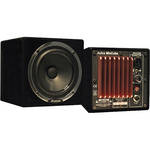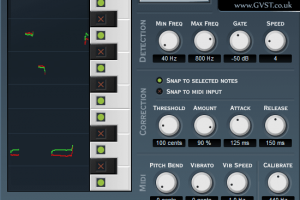Download free Pitch Correction VST,VSTi,AU,RTAS music software plugins & Instruments. Tags: Pitch Shifter, Autotune. Auburn Sounds - Grallion 2 Vocal Changer. Graillon is a Live Vocal Changer that brings a world of possibilities right into your DAW, with carefully designed features. Now, Auto-Tune is available as software for most users. Some standard instruments have built-in Auto-Tune technology that helps in real-time pitch correction, like the Peavey AT-200 guitar. The latest version of Auto-Tune, Auto-Tune Pro, is the most advanced version of the software made yet and is loaded with tons of features.
Year / Release Date : 6/12/2019
Version : 9.1.0
Developer : Antares
Developer’s site : Antares
Format : VST / VST3 / AAX
Bit : 64bit
Tabletka : cured
System Requirements : Windows 8.1 to Windows 10 as required
Description :


AutoTune is the most complete and advanced version of Auto-Tune.It includes both automatic mode for real-time pitch correction and effects, and a graph mode for detailed editing of pitch and time.
For twenty years, Autotune aax has been a professional standard for pitch correction and a tool for selecting the most significant vocal effect in popular music.
Now, with the advent of Auto-Tune Pro, it has become more versatile and easier to use than ever before, thanks to a completely redesigned interface and powerful new processing, editing and navigation features.
We added automatic key detection using the new Auto-Key plug-in (included with Auto-Tune Pro), the classic mode for “Auto-Tune 5 sound” and real-time MIDI control.
The Auto Mode and Graph Mode interfaces have been redesigned to provide the most efficient, flexible, and intuitive workflow for professional users and beginners.
Auto-Tune Pro also includes auto tune efx Flex-Tune and Humanize for more transparent and natural tuning, as well as a low-latency mode so you can work in real time without distracting the delay.
Autotune aax free also has a time correction function for non-destructive time editing, as well as formant correction, Vibrato controls and neck length modeling.
Auto-tune Pitch Correction Microphone

Autotune aax crack offers professional pitch correction and classic effects that you are looking for if you want to quickly tweak some dubious notes or carefully polish the entire performance.


included:
Auto-Key v1.0.1 – Automatic Key and Scale Detection
Auto-Tune Access v9.0.0 – Essential Auto-Tune Features
Auto-Tune Artist v9.0.0 – Real-Time Pitch Correction
Auto-Tune EFX + v9.0.0 – Vocoder style Vocal Effects
Auto-Tune Pro v9.1.0 – World Standard Professional Pitch & Time
just install – CodeMeter Runtime not required
Access, EFX = VST2
Access, EFX, Key, Artist, Tune = VST3
You may also like;
Auto Tune Pitch Correction
Leave a Reply
Auto Pitch Correction
Even with the mid-20th century’s recording studio wizards, if you were a vocalist who sang off pitch, solutions were time-consuming, difficult, and not always ideal. In the 1950s, capable vocalists could get by with a little spring reverb and maybe some slap back echo. Later, in the 1960s, singers could multitrack their vocals and apply other effects like tremolo (Tommy James on “Crimson & Clover”). John Lennon, famously insecure about his own voice, had engineer Geoff Emerick run his vocals through a gerry-rigged Leslie organ speaker to create a vibrato effect for “Tomorrow Never Knows.”
Beyond these effects, if a vocalist couldn’t sing on pitch throughout a recording, it was difficult to mask, and required more drastic measure. But like most anything in the 20th century, the technological solutions for off-pitch vocals were waiting to be discovered.
Variable tape speed
By the 1940s, studio engineers could produce primitive pitch correction by tweaking a reel-to-reel magnetic tape recorders varispeed. This process became more popular in recording studios during the 1950s and 1960s. By slowing down or speeding up a part of a recording and splicing with the tape containing the majority of the song, engineers could alter pitch. Another method of varispeed pitch correction was to slow a tape machine down, re-record a new part at a lower pitch, and then bring the recording back up to its original speed.